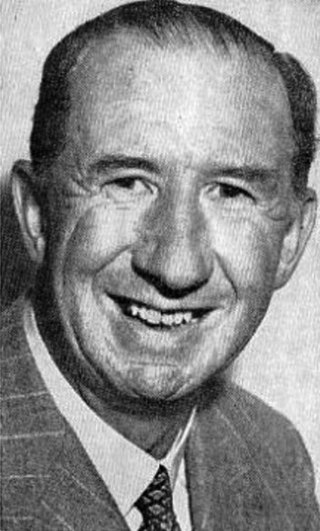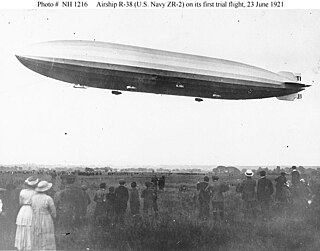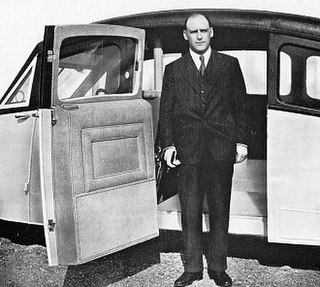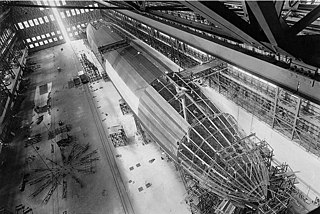
The slide rule is a mechanical calculator hand-operated by sliding two rulers to perform multiplication and division primarily, and possibly exponents, roots, logarithms, and trigonometry. It is not typically designed for addition or subtraction, which is usually performed using other methods, like using an abacus. Maximum accuracy for standard linear slide rules is about three decimal significant digits, while scientific notation is used to keep track of the order of magnitude of results.

Airspeed Limited was established in 1931 to build aeroplanes in York, England, by A. H. Tiltman and Nevil Shute Norway. The other directors were A. E. Hewitt, Lord Grimthorpe and Alan Cobham. Amy Johnson was also one of the initial subscribers for shares.

Nevil Shute Norway was an English novelist and aeronautical engineer who spent his later years in Australia. He used his full name in his engineering career and Nevil Shute as his pen name, in order to protect his engineering career from inferences by his employers (Vickers) or from fellow engineers that he was "not a serious person" or from potentially adverse publicity in connection with his novels, which included On the Beach and A Town Like Alice.

Sir Barnes Neville Wallis was an English engineer and inventor. He is best known for inventing the bouncing bomb used by the Royal Air Force in Operation Chastise to attack the dams of the Ruhr Valley during World War II.

R101 was one of a pair of British rigid airships completed in 1929 as part of the Imperial Airship Scheme, a British government programme to develop civil airships capable of service on long-distance routes within the British Empire. It was designed and built by an Air Ministry–appointed team and was effectively in competition with the government-funded but privately designed and built R100. When built, it was the world's largest flying craft at 731 ft (223 m) in length, and it was not surpassed by another hydrogen-filled rigid airship until the LZ 129 Hindenburg was launched seven years later.

The R.38 class of rigid airships was designed for Britain's Royal Navy during the final months of the First World War, intended for long-range patrol duties over the North Sea. Four similar airships were originally ordered by the Admiralty, but orders for three of these were cancelled after the armistice with Germany and R.38, the lead ship of the class, was sold to the United States Navy in October 1919 before completion.

His Majesty's Airship R100 was a privately designed and built British rigid airship made as part of a two-ship competition to develop a commercial airship service for use on British Empire routes as part of the Imperial Airship Scheme. The other airship, the R101, was built by the British Air Ministry, but both airships were funded by the Government.

Sir Charles Dennistoun Burney, 2nd Baronet was an English aeronautical engineer, private inventor and Conservative Party politician.

Howden is a market and minster town and civil parish in the East Riding of Yorkshire, England. It lies in the Vale of York to the north of the M62, on the A614 road about 16 miles (26 km) south-east of York and 3 miles (4.8 km) north of Goole, which lies across the River Ouse.

A rigid airship is a type of airship in which the envelope is supported by an internal framework rather than by being kept in shape by the pressure of the lifting gas within the envelope, as in blimps and semi-rigid airships. Rigid airships are often commonly called Zeppelins, though this technically refers only to airships built by the Luftschiffbau Zeppelin company.

Ruined City is a 1938 novel by Nevil Shute, published by Cassell in the UK. In the US, the book was published by William Morrow under the title Kindling.
Vickers Limited was a British engineering conglomerate. The business began in Sheffield in 1828 as a steel foundry and became known for its church bells, going on to make shafts and propellers for ships, armour plate and then artillery. Entire large ships, cars, tanks and torpedoes followed. Airships and aircraft were added, and Vickers jet airliners were to remain in production until 1965.

Sherburn-in-Elmet Airfield is located 1.5 nautical miles east of Sherburn in Elmet village and 5.5 NM west of Selby, North Yorkshire, England.

Marazan is the first published novel by the British author Nevil Shute. It was originally published in 1926 by Cassell & Co, then republished in 1951 by William Heinemann. The events of the novel occur, in part, around the Isles of Scilly.

So Disdained is the second published novel by British author, Nevil Shute. It was first published in 1928 by Cassell & Co., reissued in 1951 by William Heinemann, and issued in paperback by Pan Books in 1966. In the United States it was first published in 1928 by Houghton Mifflin in Boston, with the title The Mysterious Aviator.

The British Imperial Airship Scheme was a 1920s project to improve communication between Britain and the distant countries of the British Empire by establishing air routes using airships. The first phase was the construction of two large and technically advanced airships, the R100 and the R101; the R100 made a successful transatlantic crossing to Canada in 1930 in 78 hours. The scheme was terminated in 1931 following the crash in France of R101 in October 1930, while attempting its first flight to India.

The Beardmore Tornado was an eight-cylinder inline diesel aircraft engine built in 1927 by William Beardmore and Company of Glasgow, Scotland, and used in the British R101 airship when petrol engines were thought unsafe in the tropics. The model is given as Tornado IIIA or Tornado III C.I. The fuel is described as Diesel heavy-oil.
Alfred Hessell Tiltman FRAeS, known as Hessell Tiltman, was a notable and talented British aircraft designer, and co-founder of Airspeed Ltd.

Major George Herbert "Lucky Breeze" Scott, CBE, AFC, was a British airship pilot and engineer. After serving in the Royal Naval Air Service and Royal Air Force during World War I, Scott went on to command the airship R34 on its return Atlantic crossing in 1919, which marked the first transatlantic flight by an airship and the first east–west transatlantic flight by an aircraft of any kind. Subsequently, he worked at the Royal Airship Works in connection with the Imperial Airship Scheme and took part in a second return Atlantic crossing, this time by the R100, in 1930. He was killed later in the year aboard the R100's near-sister, the R101, when it crashed in northern France during a flight to India.
Georgina Norway, was a British writer of children's adventure fiction.
















